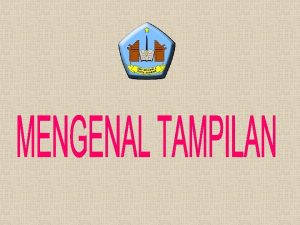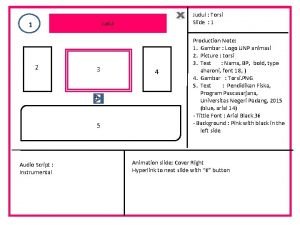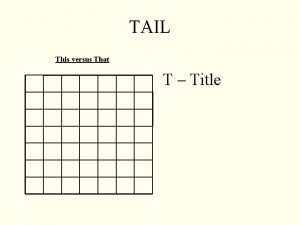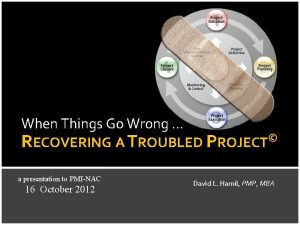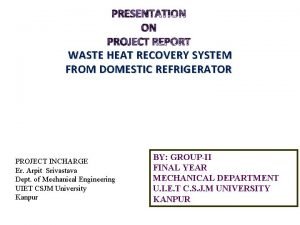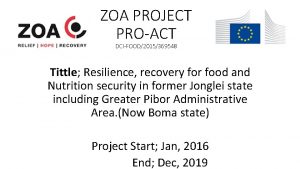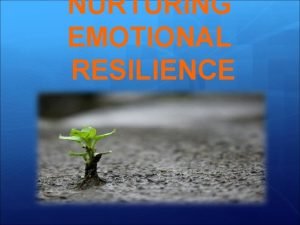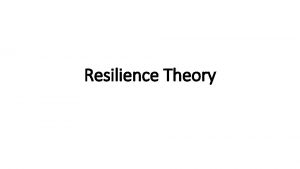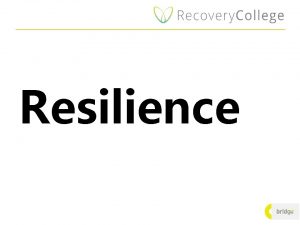ZOA PROJECT PROACT DCIFOOD2015369548 Tittle Resilience recovery for








- Slides: 8

ZOA PROJECT PRO-ACT DCI-FOOD/2015/369548 Tittle; Resilience, recovery for food and Nutrition security in former Jonglei state including Greater Pibor Administrative Area. (Now Boma state) Project Start; Jan, 2016 End; Dec, 2019

TOPICS. a. Ability to produce sufficient staple food for own household restored. b. Resilience against climate related crop-failures builtup. c. Access to healthy and diverse types of food increased. d. Access to farm-input supply systems for seeds, tools and fertilizers obtained.

Target beneficiaries Areas of operation; Akobo (Nile Hope), Bor and Pibor. • 1, 500 hh will be supported to increase their ability to produce sufficient staple food. • 250 hh supported to specialize in vegetable growing. • 250 hh supported to be better fisher folks.

1. PROJECT STATUS. We have implemented 18 months of the 48 months of the project. Activities continuing are; I. Identification of existing producer association and formation on going. II. Execution of Planned capacity building / trainings of government official (Agricultural Extension workers) and project officers. III. Identification and registration of most vulnerable households, 750 households, for small ruminant restocking. IV. Collecting production data and annual household survey. V. Construction of improved grain stores at household level continues. Farmers have already been supported with hermetic bags for grain storage. VI. Identification and Establishment of vegetable (250 HH) and fishing groups (250 HH). VII. Promotion of eating balanced diet, breast feeding and proper food hygiene continues. VIII. 19 Village Savings and Loans Associations (VSLA’s) meet as scheduled and continue to save and manage the groups affairs accordingly.

2. RESULTS ACHIEVED. i. Developed and revived, at Boma level, rules and regulations framework controlling and managing the grazing and farming land. ii. Established and delivered Good Agricultural Practices trainings in all the 60 farmer groups. iii. Capacity development of the local government agriculture Extension workers. This has been achieve in two way, i. e on-job training and TOT’S on subject matter on FFS, VSLA establishment and management and conservation Agriculture. iv. Improved grain storage through construction of improved stores and supply and use of hermetic bags. v. VSLA’s have continued to meet their savings obligation and members are also borrowing from the pooled funds. 4 VSLA’s have completed their saving cycle, share-out has been done and they are now starting a new cycle.

3. LESSONS LEARNED The use of locally produced seeds enhances the crop survival during the extreme weather conditions thereby ensuring there some performance of the crop due to it’s adaptability to the local climatic conditions. II. The small livestock raising specifically poultry, is a challenge for some communities to accept. They’re very vulnerable to many predators, and since they’re free ranging, some communities consider them dirty because they eat including faeces. Therefore, they not a choice enterprise in those communities. III. Savings obtained from the Village savings and Loans association lose value very fast due to currency devaluation. Therefore, the savings should be converted to easy to sell appreciable assets, eg grains, small ruminants or buy hard currency. IV. Developing the agro-dealers may not be practical due to the inaccessibility caused by both the rains and insecurity. Therefore, practicality of this action is in doubt. Hence, inputs that can be generated from within the local community will find their way to the market, eg, Local blacksmith and seed production by farmers. V. Despite the possibility of the neighbouring communities having the potential to learn from each other, the exchange visit foreseen by the project may not happen mainly due to the existing and long running hostilities between them. VI. Food aid support to the farmer groups during the lean season enabled the farmers to participate fully in the agricultural activities and reduced migration from the villages. I.

4. PLANS I. Organise cross border farmer visit. Where possible visit EU project with the same goals. II. Continue to enforce the rules regulating grazing and farming land. (Reduce crop damage) III. Trainings and management of producer groups and VSLA’s continue IV. Establish and support vegetable and fishing groups. V. Restocking of the small ruminants VI. Identify and train hygiene and nutrition lead mothers as healthy-eating promoters. VII. Undertake a midterm review and budget re-allocation as well as realign the activities where necessary.

The end. Thank you.



